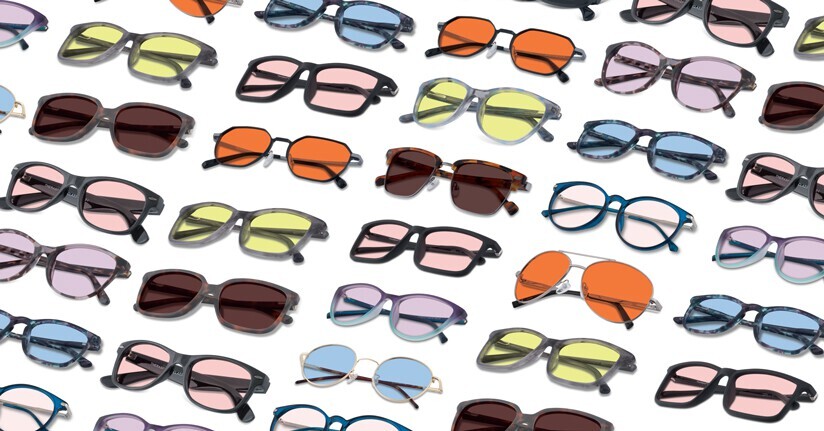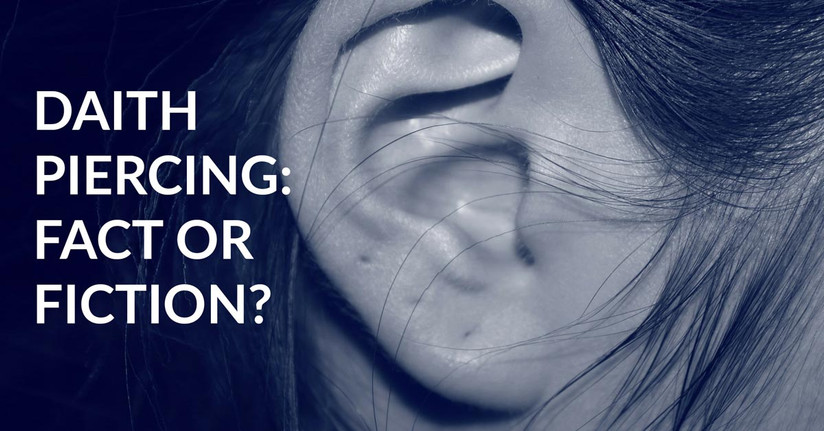What Research, Doctors, and Patients Say about Daith Piercing for Migraine
You have probably heard about a daith piercing—which is performed on the innermost cartilage fold of the ear—as a possible source of relief for migraine, but does it really work and is there any research supporting those who claim it is effective? We take a look at this controversial topic in an effort to separate fact from fiction.
What research says
There is currently no published medical research directly linking daith piercing to migraine prevention or relief; in fact, it has been publicly debunked as an “unproven” treatment method primarily because it has only been supported by anecdotal evidence from patients. And it is often tied to acupuncture, in and of itself a disputed migraine relief option.
Dozens of studies have explored the effects of acupuncture for migraine and headache disorders, and they have returned inconsistent findings that reveal varying levels of relief and high influence of placebo. However, there has been documented research indicating it can be a benefit, and proponents believe that properly-administered acupuncture techniques facilitate the release of endorphins for pain relief, especially in the case of migraine. They also cite the relatively few instances of side effects and the likelihood that it can at least be as effective as preventative medications as additional reasons it should be considered as a migraine treatment. It is important to note, however, that daith piercing is NOT a form of acupuncture, and there are several examples of patients who report vastly different side effects from the daith procedure.
More recently, researchers have explored how stimulation of the vagus nerve—a cranial nerve that also travels to the ear—may also improve migraine symptoms.(1) The location of an inner-ear daith piercing has been suggested to reach the area in and around the vagus nerve, thus offering a possible explanation for its proposed benefits. But again, this is only a theory based on auxiliary medical findings, and patients should remain skeptical of these and other claims.
What experts say
Certified headache specialists across the country are equally suspicious of daith piercing. Experts at the Cascade Neurologic / Headache Clinic in Mount Vernon, Washington not only emphasize its lack of research but also acknowledge the additional risks posed by the piercing, such as lingering pain as well as the potential for infection. Dr. Emad Estemalik of the Cleveland Headache Clinic also disputes it is an effective treatment option, arguing that it is more likely the result of the placebo effect.
“There’s nothing in literature I’ve heard of, nothing I’ve read about, nothing I have studied out there that supports such a procedure to treat migraine,” he said in an online statement in early 2016. “Receiving a piercing in that area will not alter the pain pathway of migraine.”
Others recommend trying the dozens of other treatment options available—including precision tinted glasses for migraines—that have more substantive medical corroboration.
What patients say
Migraineurs from far and wide have shared their stories of daith piercing, and some say that it has improved their headache symptoms. However, there are also plenty of people on the other side of the debate, claiming that it had no effect on their condition and, in some cases, made it worse or triggered unpleasant side effects.
Recently, some have tried to better quantify the patient experience with this controversial treatment. An analysis of 380 participants showed that the piercing had zero effect on migraine frequency or actually increased the number of attacks for just over half (52%) of the respondents. More importantly, there was less evidence of benefit for those six months or more removed from their first daith treatment. Although the survey did not account for other migraine-related factors, including number of piercings received as well as additional treatments being utilized at the same time, it is the first quantifiable data we have on the subject.
Regardless, support for daith piercing remains highly debatable, even when taking into account the experiences of those who have tried it.
Real Migraine Relief Is More Complicated
The desperate search for relief can lead many to try new and often unverified treatments. Unfortunately we cannot ignore the volume of evidence that show daith piercing is just that...unproven. Moreover, it has the potential to lead to inner ear pain, infection, or even worsened migraine symptoms in isolated cases, unlike acupuncture which is relatively safe (even if mostly unsubstantiated). If you have found relief with it or want to try it because you think it might help, that is absolutely your choice, and we hope it makes a difference for you. But we hope to see future studies on it to determine more definitively its role in helping those with migraine; in the meantime we are going to continue to recommend that you work with your headache specialist to find the right resources for your specific treatment toolkit—preferably those with a better track record.
References:
1 Chen SP1, Ay I, de Morais AL, Qin T, Zheng Y, Sadeghian H, Oka F, Simon B, Eikermann-Haerter K, Ayata C. Vagus nerve stimulation inhibits cortical spreading depression. Pain. 2016 Apr;157(4):797-805. doi: 10.1097/j.pain.0000000000000437.

TheraSpecs® Glasses for Light Sensitivity
Find the glasses that fit your needs and lifestyle, and stay protected from screens, fluorescents, unwanted blue light, sunlight, flashing lights, and more.
Shop Now



